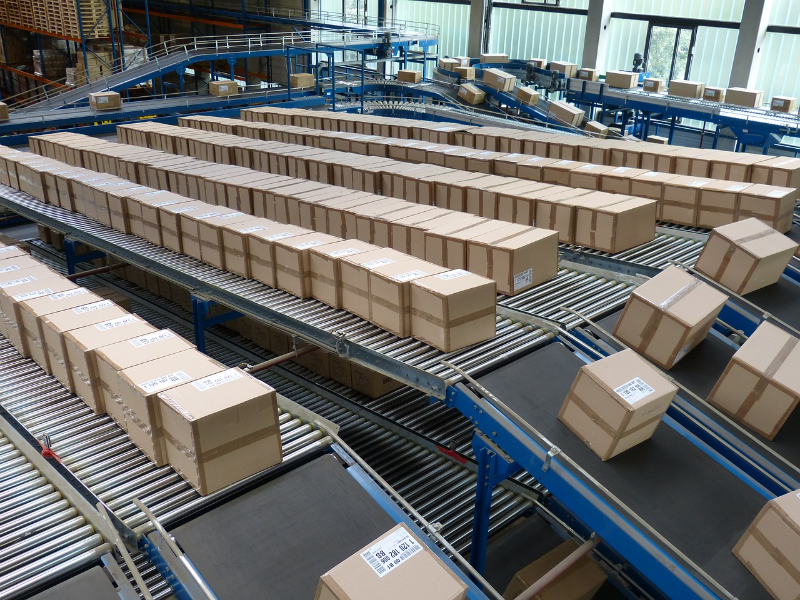Friction on Moving Surfaces
![[url=https://pixabay.com/en/flat-beds-flatcars-flat-wagons-1293240/]"FlatCar"[/url] by OpenClipart-Vectors is in the [url=http://creativecommons.org/publicdomain/zero/1.0/]Public Domain, CC0[/url]
Friction must act in the direction of the acceleration of the train car if the containers are to stay in place securely.](https://www.geogebra.org/resource/uQwpArWQ/hY2cmVZrcNmItdai/material-uQwpArWQ.png)
It is best to think of friction as a force that tries to eliminate relative motion between objects. In most cases things slide on the ground, and therefore friction tends to prevent that slippage (or relative motion) by slowing the sliding object down until it eventually comes to rest.
Let us now take a look at the friction between an object and a moving surface such as the containers on the flat bed train car above. Clearly the train car can move. It can speed up, slow down or make a turn around a track - all of which constitute acceleration. If the containers are to go with the train car, they too must accelerate at a rate that matches that of the train car. If they don't, they slide off the car.
Consider a train car starting from rest and accelerating to the right. If the containers don't accelerate to the right at the same rate as the car, they will slip. It is therefore the job of friction to prevent this slippage and to accelerate the containers to the right. Thus the static friction force acting on the containers is toward the right. On a level track, the maximum friction force determines the maximum rate at which the train car can accelerate such that the containers don't slip relative to it. The forces on each container look like this:
The friction on the containers always acts in the direction of the acceleration of the train car. If it didn't, the car would accelerate rightward and the containers leftward... and that wouldn't end well. Regardless of the direction of the acceleration of the train car - since it changes if the car speeds up versus slows down versus turns - the friction on the containers will act in that direction. The biggest magnitude of acceleration that friction can cause on the container is just
Conveyor Belts

Conveyor Belts
If you look at the photo of the factory with conveyor belts carrying the boxes up the ramps, can you determine the direction of the friction force? The belt itself is running in the upward direction. It is the job of friction to make the boxes also move in the upward direction so that there is no slippage or relative motion between the boxes and belt. This means that friction must be providing the force up the ramp to move the boxes. The maximum force friction can apply is just This is just friction on an incline.
Since conveyor belts tend to move at constant speed, what do you suppose the direction of the friction force would be on a box going down a conveyor belt ramp? If you don't know for sure, consider what a box would do on a frictionless conveyor belt ramp and then think about how the friction changes that.
What about the train or the conveyor belt?
In the examples above we focused on the containers sitting on the train car, and on the boxes riding along the conveyor belts. But what about the forces experienced by the train car itself or the belt itself? As you would imagine, having a heavy container resting on top of a train car will cause the train to feel a burden and accelerate slower as it takes off as compared to the train without any load. This is simply due to Newton's 3rd law. If, for instance, the container experiences a rightward force of friction as the train accelerates rightward, then the train must be feeling a leftward force of friction that exactly matches the rightward force on the container in magnitude. That leftward force of friction on the train car makes its rightward progress slower.
In the case of the conveyor belt carrying boxes up a ramp, recall that the friction forces on the boxes is upward. This means that the conveyor belt itself feels a downward force which will attempt to slow its upward motion. Typically you won't see it slow down because some computer would notice the slowing before your eyes do, and would send more electrical current to the motor driving the belt such that it maintains its speed at the cost of a higher electric bill. After our chapters on energy you will know how much extra energy such motors would consume.
Stacked Boxes
As a good test of your understanding of friction and Newton's 3rd law, consider the case of two boxes stacked upon one another. There is friction between the two blocks and also between the bottom block and the surface. In this sense the top block rides on a potentially moving surface and the bottom block potentially slides along the assumed-stationary surface.